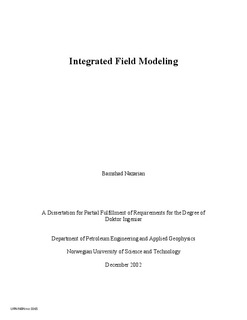| dc.description.abstract | This research project studies the feasibility of developing and applying an integrated field simulator to simulate the production performance of an entire oil or gas field. It integrates the performance of the reservoir, the wells, the chokes, the gathering system, the surface processing facilities and, whenever applicable, gas and water injection systems.
The approach adopted for developing the integrated simulator is to couple existing commercial reservoir and process simulators using available linking technologies. The simulators are dynamically linked and customized into a single hybrid application that benefits from the concept of open software architecture. The integrated field simulator is linked to an optimization routine developed based on the genetic algorithm search strategies. This enables optimization of the system at field level, from the reservoir to the process. Modeling the wells and the gathering network is achieved by customizing the process simulator.
This study demonstrates that the integrated simulation improves currentcapabilities to simulate the performance of an entire field and optimize its design. This is achieved by evaluating design options including spread and layout of the wells and gathering system, processing alternatives, reservoir development schemes, and production strategies.
Effectiveness of the integrated simulator is demonstrated and tested through several field-level case studies that discuss and investigate technical problems relevant to offshore field development. The case studies cover topics such as process optimization, optimum tie-in of satellite wells into existing process facilities, optimal well location, and field layout assessment of a high pressure high temperature deepwater oil field.
Case study results confirm the viability of the total field simulator by demonstrating that the field performance simulation and optimal design were obtained in an automated process with reasonable computation time. No significant simplifying assumptions were required to solve the system and tedious manual data transfer between simulators, as conventionally practiced, was avoided. | nb_NO |
